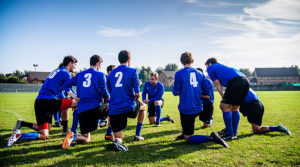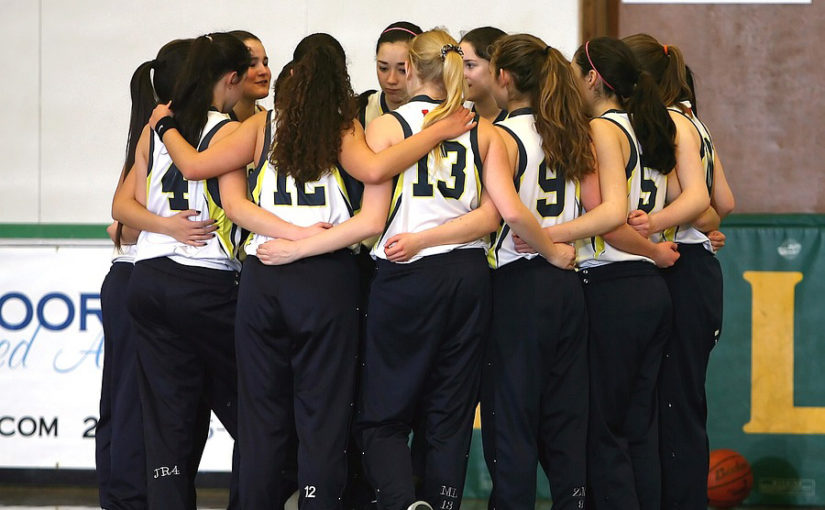3 practical strategies to train leadership
 Whether you believe leaders are born or made, it’s a coach’s responsibility to foster an environment where leadership skills can not only develop but thrive. Across all sports, coaches can make choices about how to structure their practices with built-in leadership training. The more opportunities your student-athletes have to test their leadership in action, the better.
Whether you believe leaders are born or made, it’s a coach’s responsibility to foster an environment where leadership skills can not only develop but thrive. Across all sports, coaches can make choices about how to structure their practices with built-in leadership training. The more opportunities your student-athletes have to test their leadership in action, the better.
The sign of a good coach is not simply taking care of every detail. We want our practices to run smoothly, but some of the best moments in coaching occur when we’ve left enough room for the voices and actions of the athletes to shape their own experiences. Here are a few practical strategies to consider when crafting a practice environment that empowers athletes leading athletes.
Coach-free huddle
Athletes huddle in many different sports, specifically as a function of competition like we see in football. Typically, it’s a greater part of game culture than practice culture.
When we think of basketball, we can picture an elite point guard bringing the team together after a foul to rally or refocus their teammates. Regardless of sport, encouraging huddling in practices, as deemed necessary by player initiative, has many benefits. It offers a test of game knowledge. Rather than pausing a drill and instructing players what needs to be fixed, coaches can give players a chance to recognize when something isn’t working, take action by calling a huddle, and work together to make improvements. This develops critical thinking, accountability and cooperation among your players.
» ALSO SEE: The 13 qualities of great leaders
Small group huddles, separated by position group, offer another option and can be implemented between drills. The opportunity to practice critical thinking and cooperation enhances any established leader, and it increases positive leadership behaviors of everyone on the team. The more huddles players call, the more leaders coaches can establish in their programs. This has positive outcomes for everyone involved.
Doing chores
Having players care for the practice field or court as a part of leadership development is something that volleyball, tennis, baseball and softball coaches recognize as a valuable part of sport culture. Find ways to bring similar responsibilities to the sport you coach.
 Ask players to put up the nets and care for all of the equipment. Sometimes, this is the one place a player finds their niche. They can contribute by carrying the water or shagging balls. The opportunity to contribute physically helps them carry their team in ways that might not be so obvious to everyone in the program. Players invested in the nuts and bolts of the training environment in real, tactile ways become an extension of the coaching staff. By “doing chores,” players develop responsibility, selflessness and communication.
Ask players to put up the nets and care for all of the equipment. Sometimes, this is the one place a player finds their niche. They can contribute by carrying the water or shagging balls. The opportunity to contribute physically helps them carry their team in ways that might not be so obvious to everyone in the program. Players invested in the nuts and bolts of the training environment in real, tactile ways become an extension of the coaching staff. By “doing chores,” players develop responsibility, selflessness and communication.
We all want practices to go smoothly, and sometimes small tasks like having all of the cones in place before practice make things easier. However, our players are the ones missing out on opportunities to practice a higher level of responsibility and selflessness. And don’t make the mistake of only letting rookies, freshmen or benchwarmers undertake these minor tasks.
Self-governance
Self-governance and leadership should be synonymous. However, even the most collaborative player-driven coaches can be so well organized and meticulous that players miss out on chances to truly govern themselves.
A great captain is one that squashes issues before the coach catches wind of any problems. But before players can be identified as captain material, they need chances to hone the skill of recognizing issues they can tackle on their own, and what issues they need to bring to a coach. Future captains need chances to govern themselves in a variety of different ways. In practice, this means letting players manage their own substitutions, leading warmups, making their teams or taking attendance. This helps them develop initiative, assertiveness, self-awareness and decision-making skills.
There are countless other ways to encourage strong communication, selflessness and accountability in student-athletes. The idea is to be intentional about why you’re structuring your practice a certain way, and how the players can use each opportunity to grow as leaders.
Using these strategies has led to a more egalitarian team culture, and this culture helps to catalyze player development. These tactics have helped me identify and empower underclassmen leaders. Each year, the team has elected a captain from the junior class. By creating space for voices in addition to our captains, coaches or seniors, the underclassmen feel empowered to step up. Additionally, I’ve found that this investment in the program creates seniors who not only lead but also perform at a high level.
Kirsten Koester is the head women’s soccer coach and assistant women’s basketball coach at Grinnell College in Iowa.





